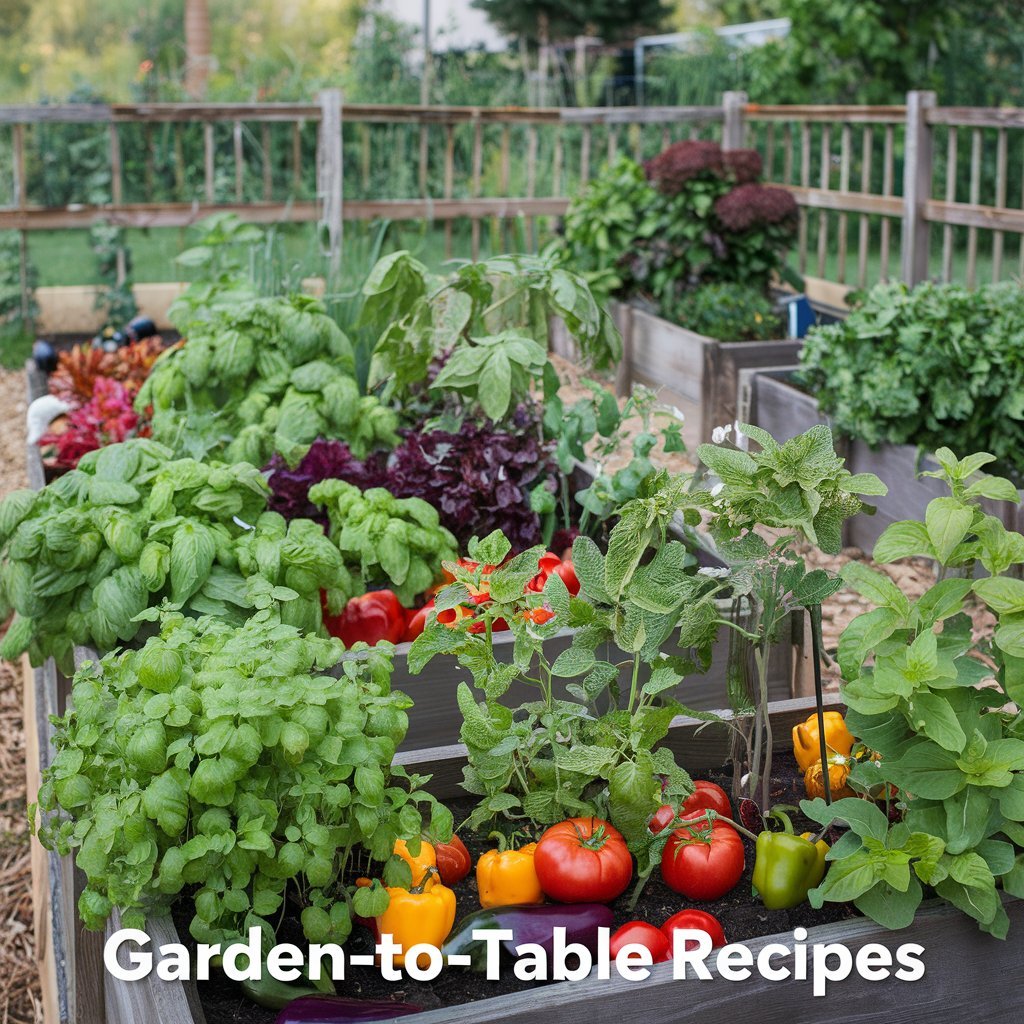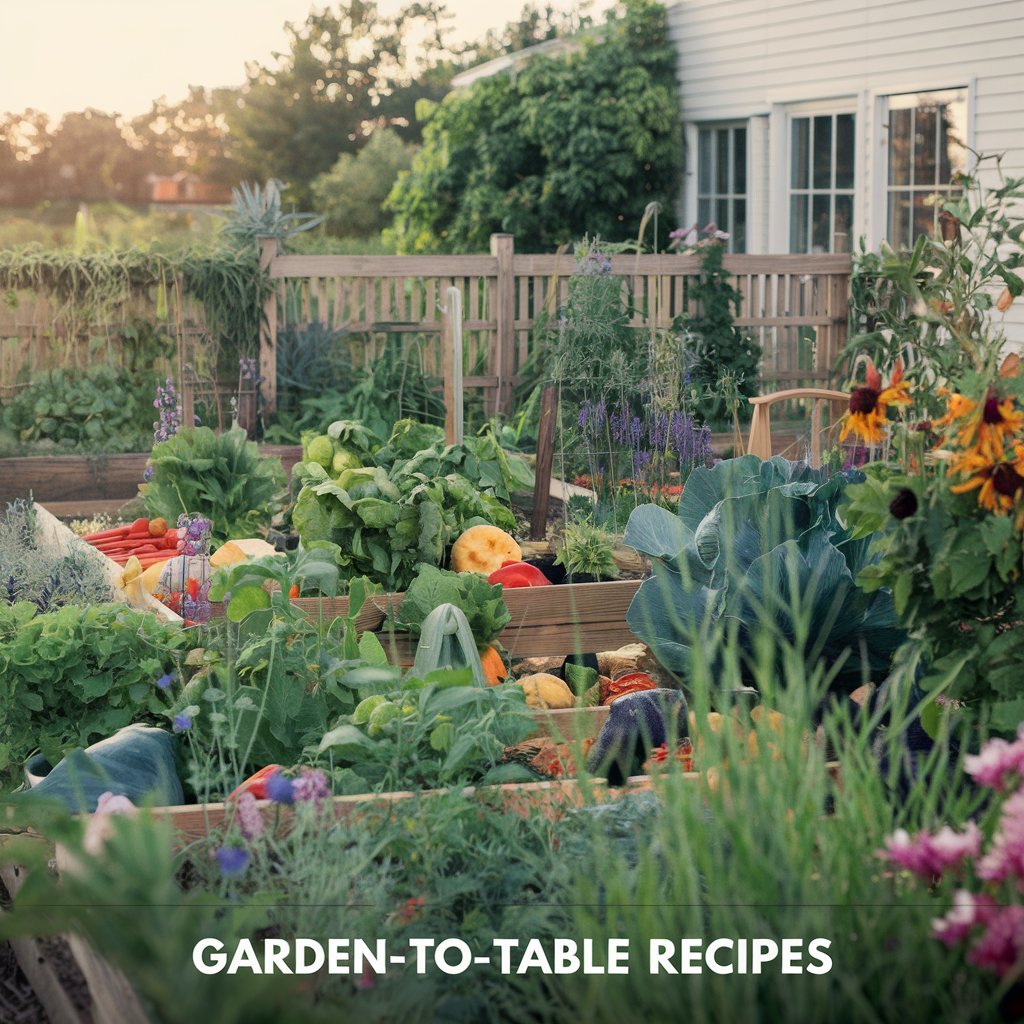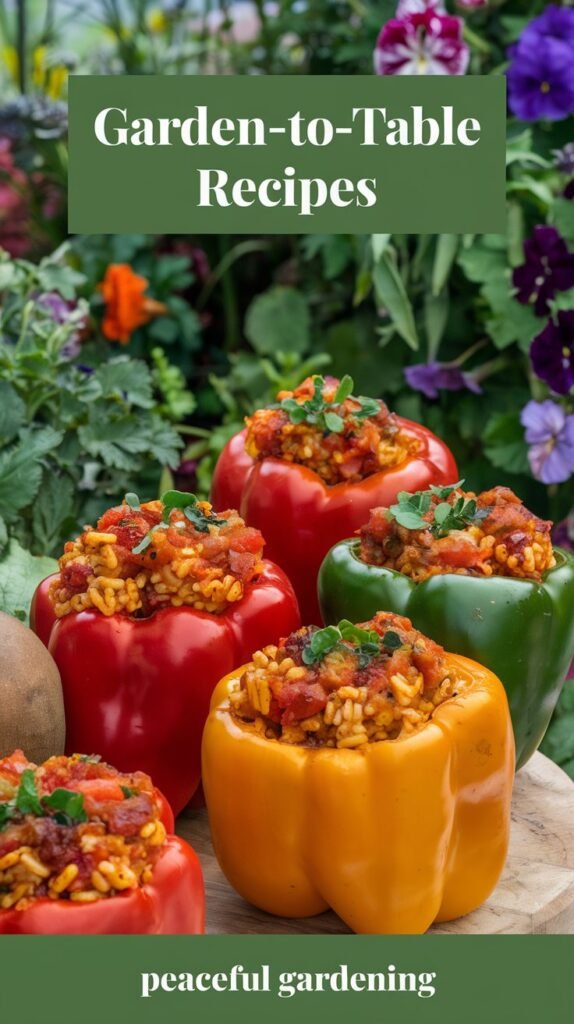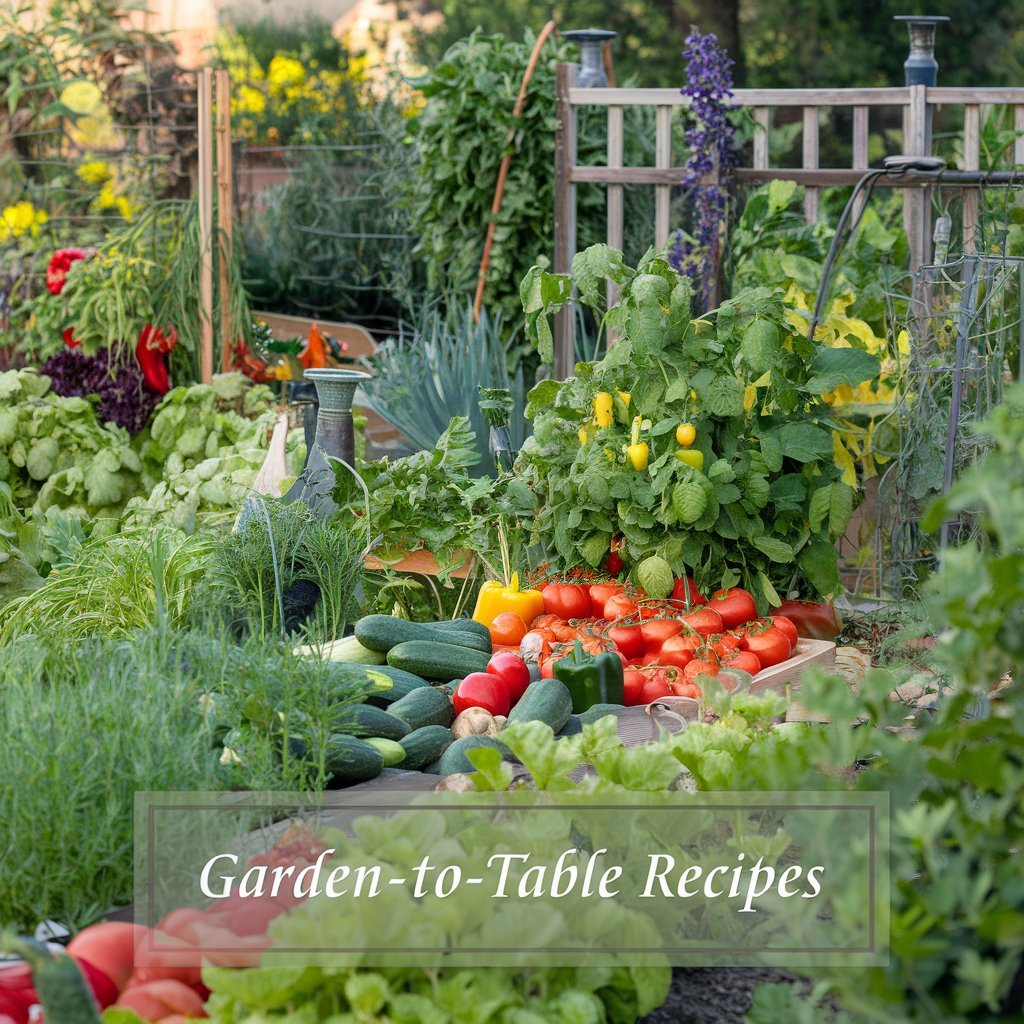Embracing Garden-to-Table Cooking
Garden-to-table cooking is like hitting the foodie jackpot—I get to chow down on meals that are not just fresh, but healthy and loaded with flavor. All thanks to the veggies and fruits I grow myself.
The Joy of Homegrown Food
There’s just something downright magical about plucking carrots or cucumbers from my garden and whipping them into something scrumptious. “Garden to table” is all about noshing on stuff that’s straight from my soil to my plate. This way, I keep the earth happy by cutting back on that pesky carbon footprint and having a say in what lands on my fork (Gardening Know How). Plus, surprise, surprise—it doesn’t empty my wallet and it’s a boost to the local farmers nearby.
A personal fave? The endless selection of fresh produce I can raise. Grocery stores ain’t got nothin’ on my homegrown bounty! And there’s the bonus of getting my kiddos involved; it’s a sneaky way to teach them all about fruits and veggies they might not find wrapped up in plastic at the store (Gardening Know How).
Planning for Garden Harvests
Just winging it isn’t gonna cut it if I want a rocking garden-to-table setup. By reimagining our meal plans to center around what’s sprouting up in the backyard, my family and I savor each abundant harvest (The Seasonal Homestead). Here’s how I do it:
Set Some Super Tasty Goals: I try challenging myself and sometimes see if I can depend solely on my backyard veggies for certain times, like a whole month. This isn’t about being extreme—it’s just a fun way to wean off the grocery store habit and embrace homegrown goodness.
Crop Rotation Magic: By changing up where I plant stuff each season, the soil stays healthy and my garden stays productive, with a steady stream of fresh pickings.
Follow a Planting Schedule: This keeps things flowing all year round, guaranteeing variety in my meals. Here’s a rough guide I go by:

| Season | Veggies to Get Growing |
|---|---|
| Spring | Lettuce, Radishes, Peas, Spinach |
| Summer | Tomatoes, Cucumbers, Peppers, Squash |
| Fall | Broccoli, Cauliflower, Carrots, Kale |
| Winter | Garlic, Onions, Beets, Brussels Sprouts |
- Stagger it Out: I don’t want my kitchen overrun with just one type of veggie, so I plant at different times. This way, there’s always some fresh crunch waiting to be picked.
When I’m on the hunt for creative ways to use my garden’s goodies, I hop online to enjoy those garden-fresh recipes and summer garden recipes for more inspiration.
By embracing this style of cooking, keeping those harvests on point, and appreciating the homegrown stuff, I turn my garden into a flavor hot spot.
Organizing Recipes by Vegetables
Simplifying Meal Planning
As a fan of turning garden goodies into delicious meals, I’ve come to see the beauty in organizing recipes by my homegrown veggies. Grouping my dishes by the veggies that are ready to pick makes cooking feel like a breeze. Plus, it’s great for keeping the fridge clutter-free and using up everything that’s ripe and ready.
Take tomatoes, for instance. When my garden is overflowing, I’m all over making sauces, salads, and soups. Here’s some easy peasy ways I sort my recipes by veggie:
| Vegetable | Recipe Ideas |
|---|---|
| Tomatoes | Salsa, Tomato Soup, Caprese Salad |
| Zucchini | Zucchini Bread, Grilled Zucchini, Zucchini Noodles |
| Cucumbers | Cucumber Salad, Tzatziki, Pickles |
| Bell Peppers | Stuffed Peppers, Fajitas, Pepper Stir-fry |

Thirsty for more? Check out our stash of garden-fresh recipes and summer garden recipes.
Maximizing Garden Produce Usage
Using every veggie from the garden can be tricky, especially when everything decides to ripen together! But I’ve got a game plan: I hit up my garden first, giving those homegrown treasures the spotlight. It’s all about being savvy and keeping it green—literally.
My approach involves making a weekly menu that jives with what’s fresh:
| Day | Vegetable | Recipe |
|---|---|---|
| Monday | Tomatoes | Tomato Basil Pasta |
| Tuesday | Zucchini | Zucchini Stir-fry |
| Wednesday | Cucumbers | Cucumber Sandwiches |
| Thursday | Bell Peppers | Stuffed Bell Peppers |
| Friday | Mixed Greens | Garden Salad |
Switching up how I shop—from store shelves to garden plots—helps me appreciate my harvest even more. For more nifty tips, head over to The Seasonal Homestead.
By rolling with these plans, I can savor every veggie, cut back on waste, and make my meals pop. For neat tricks on using all those fresh herbs, pop over to our fresh herb recipes.
So, get your creative hat on, dig into that garden-fresh magic, and let your veggies shine on your plate!
Preserving Garden Goodies
Keeping my garden goodies around all year long lets me munch on homegrown yumminess no matter the season. I’ll spill the beans on how I save those extra tomatoes, zucchinis, and herbs—no produce left behind on my watch!
Freeze It or Ferment It
Freezing—couldn’t be easier, folks! Freeze those green beans, bell peppers, and peas to keep ’em fresh. I give ’em a quick hot bath in boiling water to lock in color and nutrients before sending them off to the freezer.
| Veggie | Blanch for a Bit (mins) | Freeze ‘n Keep Time |
|---|---|---|
| Green Beans | 2-3 | 8-12 months |
| Bell Peppers | 2-3 | 10-12 months |
| Peas | 1-2 | 8-12 months |
Fermentation is another cool trick. I love turning cucumbers into pickles and cabbage into crunchy sauerkraut. This process lets them hang around longer and boosts their probiotics, which is fancy talk for good-for-your-gut stuff.
Want to geek out more on this? Check out my garden-fresh recipe collection for more on freeze and ferment finery.

Dry It Out or Can It Up
Dehydrating? Yes, please! Perfect for apples, tomatoes, and herbs. They shrink down, stay nutritious, and slide nicely into a pantry. My favorites to dry? Basil and oregano—they smell just as great when I use ’em in fresh herb concoctions.
| Goodie | Drying Time (hours) | Shelf Life |
|---|---|---|
| Apples | 6-12 | 6-12 months |
| Tomatoes | 6-12 | 6-12 months |
| Basil | 2-4 | 12 months |
Canning’s where it’s at for jams, pickles, and veggies in vinegary brine. With a bit of handy gear, my garden treasures hang out for up to a year. I’ve got a soft spot for making tomato sauce and sweet apple butter this way.
Canning curious? Start with some easy summer recipes that fit into jars like a dream.
Using these tricks, my garden’s hard work never bites the dust. Instead, I bask in summer flavors smack dab in winter. Got a garden party coming up? These preserved yummies are surefire hits. Dive into the deliciousness and have a blast!
Transitioning to Homegrown Produce
Jumping from grocery store aisles to your backyard bounty can be thrilling and tricky, but I’ll help you navigate the waters of home-cooked, home-grown. Let’s dig into setting goals and tackling the little bumps on this garden-to-table road.
Setting Consumption Goals
When you’re starting to swap in homegrown goodies, it’s all about planning smart. Here’s how I do it:
- Know Your Eats: First, look at what you’re munching on now. Make a list of veggies and herbs you love so you can figure out what to plant.
- Monthly Goals: Break it down month by month. What do you wanna harvest and eat each time? Check this out:
| Month | Veggies & Herbs | How Much (lbs) |
|---|---|---|
| January | Kale, Spinach | 10 |
| April | Lettuce, Radish, Mint | 15 |
| July | Tomatoes, Basil, Zucchini | 20 |
| October | Pumpkins, Swiss Chard | 12 |
Make It a Star: Let your garden feeds steal the show in the kitchen. Check your own supply first before hitting the store. (The Seasonal Homestead)
Keep Tabs: Jot down how much of your homegrown stuff you actually use each month. It’ll help with planning next year’s planting for even better yields.
Overcoming Common Challenges
Going from shopping cart to garden cart has its hurdles. Here’s my take on the common ones:
What’s in Season: You can’t grow everything all year, but you can preserve your haul by freezing and fermenting or dehydrating and canning. That way, you always have something from the garden, ready to go.
Pests and Plagues: Bugs and diseases—ugh. Regular checks and some good old organic pest control can keep your plants thriving.
Clock Ticks: Keeping a garden is no quick flick of the wrist. Scheduling time for weeding and watering helps manage the grind.
Tiny Spaces: Even if your real estate is cramped, there’s room for greens. Vertical and container gardening will turn small spaces into veggie factories. (Great Harvest)
Trial and Error: It’s all about getting your hands dirty and learning as you go. Start with the easy ones like lettuce and mint before you venture into veggies with an attitude.
Need inspiration for turning fresh-from-the-garden goodies into meals? Check out our garden-fresh recipes.
Transitioning to homegrown is more than just food; it’s a lifestyle shift. You’ll see your garden become a bustling supply of ingredients and get a sweet sense of achievement. It’s kind to the planet, your wallet, and your health. Whether gearing up for a summer garden party or whipping up new fresh herb recipes, living garden-to-table is a flavorful adventure worth every bite.
Inspiring Garden-to-Table Recipes
There’s a special kind of satisfaction in whipping up meals straight from the garden. Let’s dive into some of my all-time favorite garden-to-table recipes that’ll spice up your kitchen escapades.
Fresh and Seasonal Dishes
One of the cool things about garden-to-table eats? You’re all in on what’s fresh and in season, which means tastier and healthier bites. Here’s a little list of recipes I can’t get enough of. You can track them down on the “Pinch Me I’m Eating” site:
- Spinach and Arugula Salad with Blueberries and Pecans: This salad’s got a kick with that peppery arugula, blueberries for sweetness, and a satisfying pecan crunch.
- Steakhouse Style Buttery Garlic Green Beans: Fresh green beans meet butter and garlic for a side dish you’ll want every day.
- Simple Hibachi Vegetables: Sauté up some zucchini and onions and you’ve got a homemade hint of Japanese flair.
| Recipe | Key Ingredients | When It’s Good to Go |
|---|---|---|
| Spinach and Arugula Salad | Spinach, Arugula, Blueberries, Pecans | Spring, Summer |
| Steakhouse Green Beans | Fresh Green Beans, Garlic, Butter | Summer |
| Simple Hibachi Vegetables | Zucchini, Onions | Summer, Fall |
Fancy more tasty ideas? Check out our summer garden recipes for more sunny-day eats.
Incorporating Homegrown Ingredients
Tossing in homegrown goodies into your meals doesn’t just boost flavor; it makes it all more personal. Here are some dishes that celebrate what you’ve nurtured in your backyard, with a little help from various global flavors (Williams-Sonoma):
- Creamy Balsamic Caprese Pasta Salad: Give a thumbs-up to your tomatoes and basil and whip up this Italian nod with mozzarella and balsamic glaze.
- Roasted Vegetable and Quinoa Harvest Bowls: Load up with roasted veggies like bell peppers and carrots, paired wonderfully with quinoa for a satisfying meal.
- Fried Green Tomatoes with Cajun Remoulade: Star your green tomatoes in this Southern favorite, jacked up with a spicy Cajun twist.
| Recipe | Homegrown Ingredients | Best Times |
|---|---|---|
| Caprese Pasta Salad | Tomatoes, Basil | Summer |
| Quinoa Harvest Bowls | Bell Peppers, Zucchini, Carrots | Summer, Fall |
| Fried Green Tomatoes | Green Tomatoes | Summer, Fall |
Keep things lively and unique by trying what’s thriving in your garden. For more tasty dishes, see our garden-fresh recipes.
Shifting to homegrown kitchen wizardry can change how you plan meals and enjoy your eats. Jump into the joy of homegrown food and let your garden steer your next culinary masterpiece.
Benefits of Garden-to-Table Lifestyle
Switching to a garden-to-table lifestyle can make every bite feel like a celebration of all things fresh and planet-friendly. If you’re wired like me, watching your garden’s produce turn into tasty treats brings joy on a whole new level. Let’s jump into why this lifestyle rocks.
Health and Cost Savings
Growing your own fruits and veggies means munching on stuff that’s fresh, free from dodgy chemicals, and packed with goodness. Homegrown produce is often more nutritious compared to store-bought because veggies start losing their nutrients once picked. Eating them straight from your garden means you’re getting the max benefits.
And for saving cash? You can’t beat the garden-to-table game. Snagging seeds and plants is way cheaper than shelling out for veggies at the store all the time. Plus, fiddling around in the garden counts as exercise and helps keep the heart ticking nicely. It’s like hitting the gym without needing to wear Lycra!
Here’s a quick price rundown:
| Produce | Store-Bought (per pound) | Homegrown Seeds (per pack) |
|---|---|---|
| Tomatoes | $1.50 | $2.50 (50+ seeds) |
| Bell Peppers | $2.00 | $3.00 (30+ seeds) |
| Lettuce | $1.75 | $1.50 (100+ seeds) |
Since I started planting my own grub, I’ve saved tons at the grocery store, leaving extra moolah for, well, more plants or maybe even a treat! For some mouth-watering ways to whip up those fresh herbs, check out fresh herb recipes.
Sustainability and Self-Sufficiency
Growing your own food is an ace way to shrink your carbon footprint. You can cut down on all that transport craziness involving fossil fuels. Unlike big-time farming, a home garden keeps the trees standing, which is a win for Mother Nature (Ingredion).
With my garden, I call the shots on what’s in the soil. No unwelcome pesticides or GMOs unless I give ’em the nod, keeping my munchies safe and sound. Plus, by digging into this green thumb lifestyle, I get to teach the little ones about being self-reliant and eco-savvy (Gardening Know How).
Feeling like a self-sufficient rockstar is seriously awesome. Bonus: Any leftover produce can be dried or canned so not a thing goes in the trash.
So by going garden-to-table, you’re doing more than just growing food—you’re spreading health, sustainability, and happiness. If you’re keen to get the lowdown on keeping your garden goodies around or planning feasts with the seasons, hop over to our garden-fresh recipes.

My name is Michelle Warren, and I’m the founder of Peaceful Gardening. As a 10-year breast cancer survivor, I’ve discovered the profound therapeutic power of gardening. This journey has not only helped me recover but has also become my passion and a source of ongoing peace and joy.
Peaceful Gardening was born from my desire to share the healing benefits of gardening with others. Whether you’re facing health challenges, dealing with stress, or simply looking to connect more deeply with nature, this space is for you.
Over the past decade, I’ve cultivated not just plants, but a deep understanding of how gardening can positively impact mental health. I’ve worked with local community gardens, led workshops on mindful gardening practices, and collaborated with mental health professionals to develop gardening-based stress reduction programs.
Peaceful Gardening was born from my desire to share the healing benefits of gardening with others. Whether you’re facing health challenges, dealing with stress, or simply looking to connect more deeply with nature, this space is for you.
Here, you’ll find evidence-based advice on using gardening as a tool for mindfulness, stress relief, and emotional healing. I share personal stories, practical tips, and scientifically-backed information on how to create your own therapeutic garden space, no matter the size of your yard or balcony.
My mission is to help you discover the joy, peace, and healing that comes from nurturing plants and connecting with nature. Join me in exploring how the simple act of tending to a garden can transform your mental and emotional wellbeing.
Welcome to Peaceful Gardening – let’s grow together towards better mental health!”

